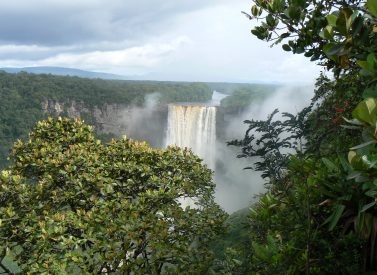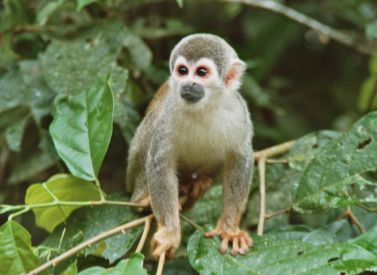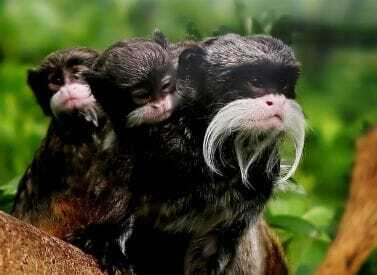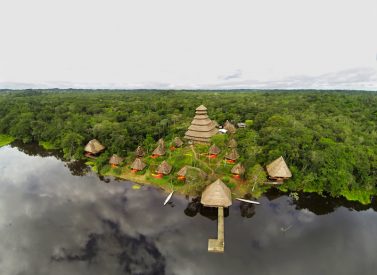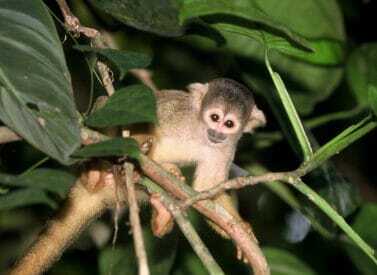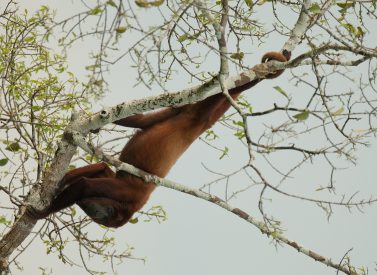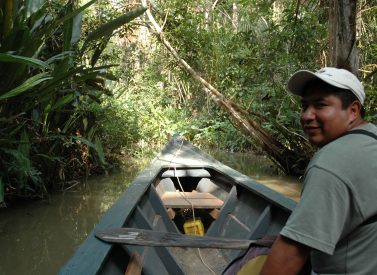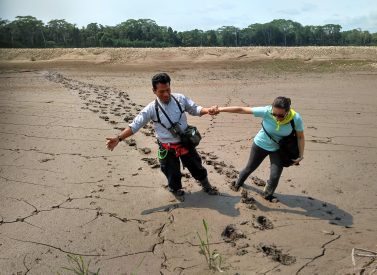Amazon Rainforest Know Before You Go Travel Guide
 by Kathy Jarvis on 28th September, 2023
by Kathy Jarvis on 28th September, 2023
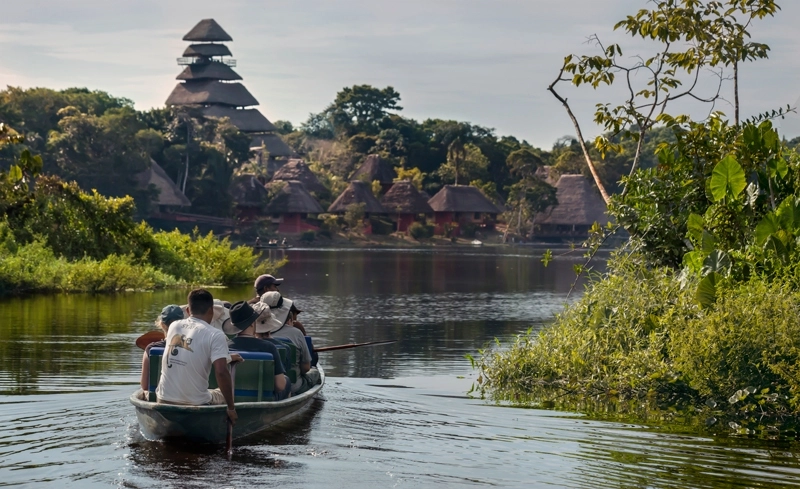
Amazon rainforest know before you go travel guide: enjoy a life-enhancing adventure.
Our Amazon rainforest travel guide takes the pressure out of planning your Amazon visit.
You’ll find what you need to know before you go with these travel tips. We cover everything from the big questions like when to go to the details like what to expect from insects, weather and what to pack, all vital to know before you travel.
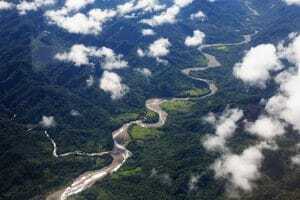
Introduction to the Amazon Rainforest Travel Areas
The Amazon basin is vast, covering an area the size of western Europe. The river starts 5,168 m high up in the Peruvian Andes and flows 4500 km to the Atlantic coast, carrying more water than any other river in the world. Tributaries arise in Colombia, Ecuador, Peru, Bolivia, and Brazil, all offering an array of lodges.
When you go will depend primarily on the rest of your trip. In the Amazon, there is only a slight variation in the climate throughout the year; you can go any time. It can rain any time of day, any day of the year. November to April are generally wetter, but humidity is always high.
It is rarely scorching, usually warm, although occasionally, a cold front passes through and can drop the temperature by ten degrees or so.
Water levels rise and fall through the year, with lower water from July to January. Usually, there is less insect life around then, and aquatic life is easier to see. High water tends to be from February to June, and paths can be flooded. Still, you may see more wildlife, notably monkeys, sloths, and birds.
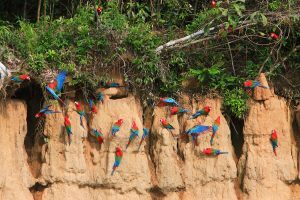
Peru Amazon Lodges
In Peru, there are over 30 Amazon Lodges in the Tambopata area, accessible from Puerto Maldonado. Several more are in the Manu National Park and adjoining zones, accessible by road from Cusco.
Alternatively, further north, fly into Iquitos for a river boat trip or lodge visit from there or travel deep and remote into Pacaya Samiria National Park.
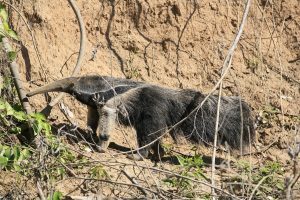
More Amazon Lodges
In Ecuador, lodges are readily accessible from the lowland towns of Coca, Tena, and Misahualli and offer opportunities to travel deeper into the forest on riverboat expeditions or by small planes.
Although less visited, Bolivia has lodges and riverboat trips near Madidi National Park and Trinidad. Brazil has the most variety, budget trips, riverboats and high-end secluded lodges. And Guyana is covered in rainforest.
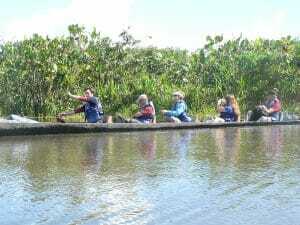
A Typical Day at Tambopata Research Centre, Peru
Flying from the desert coastline of Peru, below, you see deeply gullied foothills, increasingly green mountain scenery and magnificent ice-capped Andean peaks. Then follows a rapid descent, with the land flattening down and brown tributaries flowing towards the vast Amazon River, meandering through the verdant rainforest below.
You are met by a guide at the small Puerto Maldonado airport for a five-minute drive to town. In town, you repack your belongings into a small bag, leaving the bulk of your luggage in a locked office. You then transfer by bus and motorised canoe to the lodge, a journey taking 4 hours or so, broken up by a picnic lunch eaten on board and a visit to the National Park Ranger Station to register.
A welcome drink and an explanation of the lodge and activities available await. The Tambopata Research Centre lodge is an active research station, so scientists and volunteers share the space and make fascinating nightly presentations on their work.
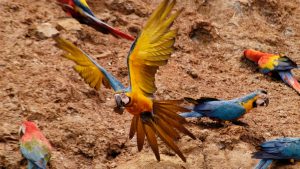
Sample Activities at Tambopata Research Centre
Choose a morning walk through a flooded forest and palm forest and notch up-close sightings of six species of monkeys: Spider, Capuchin, Squirrel, Tamarind, Titi, Red Howlers, as well as Tarantula, toads, squirrels, numerous insects, fantastic vegetation and many species of birds.
Set camera traps with the researchers in the afternoon or take a sunset cruise. Finish the day with a walk after dinner, where you will spot spiders of all shapes and sizes and the poison dart frog.
Spotting big mammals is rare. You are much more likely to see macaws and parrots at a clay lick, while on river journeys, turtles, caiman, and capybara wander the river banks or bask in the sun. Monkeys and birds are easy to spot, too.
Food is local and fresh, and there is always a vegetarian option. The bar staff mix up some delicious cocktails, and the lectures, rooms, and space are all truly remarkable. This research centre is my favourite of all the Amazon lodges.
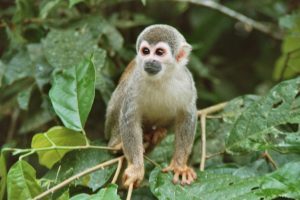
We recommend the following steps to ensure your Amazon visit is perfect:
- Book early—you’ll get the best choice of lodges, rooms and dates because the lodges do get booked up.
- Choose the level of comfort you prefer. The lodge prices vary according to the level of luxury. Still, there are many lodges to choose from, and many offer a variety of cabin/room types.
- Think about how long you have available and how far into the Amazon you would like to travel. The more remote lodges may take 4 or 5 hours to get to. They tend to have more wildlife around them.
- There are few expenses once you arrive as all services are then included (except the bar where delicious exotic cocktails are often on offer)
- Most lodges have WiFi now, but do ask if that is key to you.
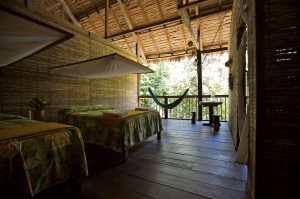
Know Before You Go: Getting Ready for a Rainforest Lodge Visit
- Choose from a visit to The Amazon in Ecuador, Peru or Bolivia – they all have a range of lodges available, from very basic to wonderfully luxurious.
- The Amazon is open to almost anyone! Lodges are located within the forest. So, while there is always a variety of walks, boat trips and other activities on offer, you can, instead, choose to relax in hammocks or do some wildlife watching and birding from the lodge without needing to go anywhere.
- Lodges tend to be built from wood in a traditional open-sided style. Always carry your camera and binoculars as even whilst sitting in the dining room, you are open to the forest and may see monkeys swinging through the trees nearby or any number of Amazon birds flit by.
- Some lodges have specialised guides for kids, catering to birders, photographers and other special interests. Generally, you will be grouped with a few other people of similar interests, but private guides are available, too. From children to active older people, birders to wildlife enthusiasts, all can enjoy the Amazon.
- Walks are varied in length, but although not significant distances, you can be out for several hours, and there may not be anywhere to sit down.
- It is good to carry a small backpack with water, snacks and a waterproof jacket. Take lightweight, densely woven clothes (to keep insects from biting through). Remember the insect repellent.
- Lodges tend to be built on stilts above the forest floor, and all the lodges have some steps. Getting there will involve getting in and out of motorised canoes, and more remote lodges will involve several hours of river travel. You need to be reasonably mobile. Staff are always around and happy to lend a helping hand.
- Some lodges have smaller wood canoes available for early morning and evening paddling and wildlife watching. They can be a bit trickier to get in and out of, but staff will always help if required.
- It is a good idea to pack light. Lightweight, quick dry clothing and a light waterproof jacket are best with some more elegant evening clothes. Long sleeves and legs are recommended to keep insects at bay.
- Wellies (rubber boots) are almost always provided. Walking boots are a good alternative.
- Food is usually local, plentiful and served buffet style. Sterilised water and fresh fruit are always on hand.
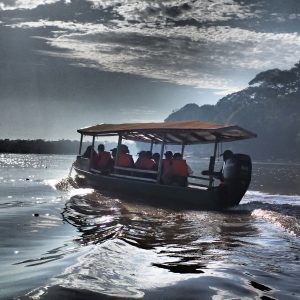
Top Tips for Amazon Rainforest Travel
If travelling by motorised canoe, take a waterproof jacket and a warm top as it can get wet and chilly on long boat journeys. On our last visit in July, the temperature never rose above 12 degrees C. A friaje was passing through. It was cold!
Take a swimsuit – there are often places for a dip.
Amazon Rainforest Know Before You Go Travel Guide
Been inspired?
The Amazon rainforest awaits you! Contact us for more information or with any further questions you have about our Amazon lodges on offer.
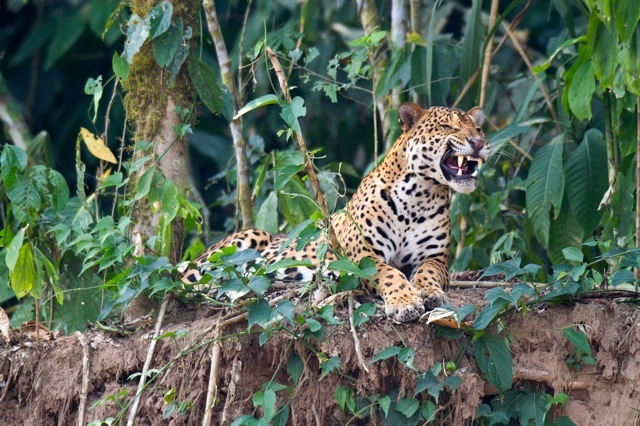


 a Group Tour
a Group Tour  a Tailor Made Tour
a Tailor Made Tour 